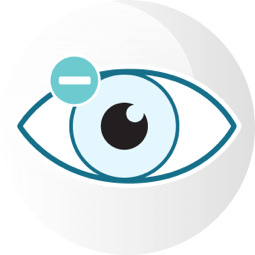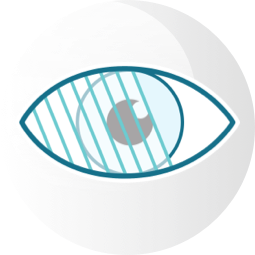Regular eye exams are crucial for maintaining vision and eye health, but they can also be a window to your overall well-being. During an eye examination, an optometrist or ophthalmologist can unearth early signs of eye diseases and other overall health conditions, many of which you might be unaware of.
Here are 11 conditions and eye diseases an eye doctor can identify during an eye exam:
- Glaucoma
- Diabetic retinopathy
- Age-related macular degeneration (AMD)
- Cataracts
- Thyroid problems
- High cholesterol
- Neurological conditions
- Cancer
- Arthritis
- Allergies
- Autoimmune diseases
Eye exams are about more than updating your vision prescription or getting new glasses—the tests we perform can offer insights into a wide range of health conditions, some of which can affect your body beyond your eyes.
1. Glaucoma
Glaucoma is often dubbed the “silent thief of sight” because it can progress gradually without easily noticeable early symptoms. Without treatment, glaucoma can cause permanent vision loss, but it can be detected early during an eye exam.
The symptoms of glaucoma include peripheral vision loss and tunnel vision in advanced stages. Fluid buildup in the eye and increased eye pressure are thought to be common causes, but glaucoma can develop for other reasons too.
The treatments we recommend for glaucoma may include prescription eye drops, laser therapy, or surgery to help lower eye pressure.
2. Diabetic Retinopathy
Diabetic retinopathy is a complication of diabetes that affects the blood vessels in the retina. It’s a leading cause of blindness in adults, and regular eye exams are vital for early detection and intervention.
The symptoms of diabetic retinopathy include blurred vision, spots or floaters, and vision loss. It’s typically caused by high blood sugar levels that lead to blood vessel damage. The treatments we recommend may include laser treatment, vitrectomy, and anti-VEGF injections to help slow progression.
3. Age-Related Macular Degeneration (AMD)
AMD primarily affects individuals over 50. It is related to changes to the macula, which is responsible for central vision. During its early stages, it may go unnoticed, making regular eye exams essential for older adults.
The symptoms of AMD include diminished central vision, trouble recognizing faces, and straight lines appearing wavy or crooked. There are 2 types of AMD, wet and dry. Dry AMD can develop gradually. Wet AMD often develops as a complication of dry AMD and may require prompt treatment.
The treatments recommended for AMD can vary depending on which type is affecting you, but some of the common treatments include anti-VEGF injections, laser therapy, and vitamin supplements.
4. Cataracts
Cataracts are characterized by a clouding of the eye’s lens, which leads to decreased vision. Cataracts can cause blindness if they are not treated. Some of the common symptoms include clouded, blurred, or dim vision and difficulty seeing at night.
Your risk of developing cataracts may increase because of genetics, diabetes, or long-term UV (ultraviolet) light exposure. When they significantly affect your quality of life, we may recommend cataract surgery to help restore your vision.
5. Thyroid Problems
Eye exams can also reveal signs of thyroid conditions, including Graves’ disease, where the thyroid overproduces hormones. Some of the symptoms of thyroid problems we can spot during an eye exam include protruding eyeballs (exophthalmos), swollen and red eyes, and vision changes.
The causes of thyroid problems can vary, but they are often linked to autoimmune diseases that target your thyroid gland. The treatment you may need can depend on the specific condition affecting you, but could include medication, radioactive iodine, or surgery.
6. High Cholesterol
High cholesterol levels in the body can manifest in the eyes as yellowish spots on the eyelids, white rings around the cornea, or blurred vision, which can be spotted during an exam.
This buildup of cholesterol can lead to blockages in the small blood vessels in the eyes, causing vision changes or even blindness if left untreated. It is essential to monitor and manage high cholesterol levels through lifestyle changes and medication prescribed by a doctor.
7. Neurological Conditions
A variety of neurological conditions can have effects on your eyes and vision. These conditions can range from migraines and headaches to more severe disorders such as multiple sclerosis and Parkinson’s disease.
The symptoms of neurological conditions that affect your eyes can vary based on the condition affecting you, but may include vision changes, dry eyes, and other changes to your eye health.
Depending on the specific condition and its severity, treatment for these conditions may involve medication, therapy, or surgery. Addressing the underlying neurological disorder may also help improve eye symptoms. Regular checkups with a neurologist are important for monitoring and managing these conditions.
8. Cancer
Though less common, cancer can be detected during an eye exam. Ocular melanoma is the most prevalent primary cancer that affects the eyes. Eye exams can also help detect cancer in your eyelids and the skin around your eye. The recommended treatments for these conditions can depend on the type of cancer affecting you, but might consist of surgery, radiation therapy, and chemotherapy.
9. Arthritis
Arthritis, specifically rheumatoid arthritis, can affect your eyes and can be found in an eye exam. Redness and eye pain are 2 common potential signs of rheumatoid arthritis, but they can be signs of several other conditions too, so it’s important to visit an eye doctor when they affect you.
The treatments recommended by your doctors may include artificial tears, corticosteroid injections, and disease-modifying anti-rheumatic drugs (DMARDs)
10. Allergies
Eye allergies are common and can be diagnosed during an eye exam. Common symptoms of eye allergies include redness, eye irritation, and watery eyes. These symptoms can be caused by pollen, pet dander, dust mites, and other common allergens.
Avoiding common allergens may help you manage eye allergies, but an eye doctor may also recommend antihistamines, decongestants, or prescription eye drops to help relieve your symptoms.
11. Autoimmune Diseases
Some autoimmune diseases, such as Sjögren’s syndrome, can affect various parts of the body, including the eyes, and due to the associated ocular symptoms, can be detected during an eye exam. Severe dry eye is a common symptom of Sjögren’s.
The treatments recommended for these conditions may include immunosuppressive medications, lifestyle changes, and eye drops.
More Than Just a Vision Screening
The significance of regular eye exams transcends mere vision checks—they play a critical role in monitoring your overall health. By allowing for the early detection of diseases, coupled with timely management and treatment, comprehensive eye exams can serve as a preventive measure against the advancement of many health conditions.
Regardless of age or physical health, integrating consistent eye exams into your healthcare routine can help safeguard your vision and give you a glimpse into your overall well-being.
You can get your eyes checked with McCauley Celin Eyecare Associates at 1 of 3 locations. Contact us today to book your next eye exam!













